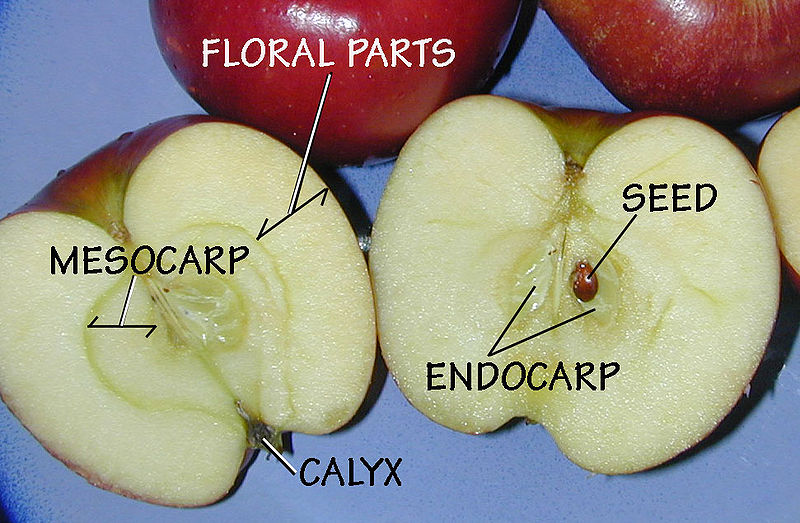Bunny is a pumpkin fanatic – pie, ice cream, muffins,
roasted seeds, jack-o-lanterns...even she’s impressed with their versatility. Beans
is currently obsessed with apples, but don’t mess with them – just whole please.
This sparked a debate on what was fruit versus vegetable and the realization
that what things actually are is not what we call them.
In the botany world pumpkins and apples are both fruits,
even though in culinary terms pumpkins and their squashy relatives get called
vegetables. This happens a lot – there’s quite a disconnect between what we
call things in food related terms versus their actual botanical classification.
In the plant world not all fruits are edible, but I would assume that chefs
don’t bother classifying inedible things. For example dandelion fluff and maple
keys are both fruits.
Fruits, in plant science terms, are the parts of the plant
that are formed from the actual flowers and ovaries. Once the flowers are done
and pollinated they magically (ok not really, science only seems like magic
sometimes) turn into fruits.

Fruits serve a specific purpose – spreading seeds around.
That can happen by a variety of methods - floating around (milkweed), sticking
to your socks and travelling (burs) or being eaten and carried by various animals
and being dropped (or pooped!) elsewhere (apples!). Because of these relationships fruit and
animals are dependent on each other – this is a symbiotic relationship (any
relationship where we get pie is good in my books).
Apples are in the family Rosacae and are a fleshy, simple
fruit called a pome. The core is actually the important part to the plant
formed from the ovary, the delicious part we eat is just extra tissue from the
flower petals and sepals that fuse with the ovary wall that evolved to make us
want to eat and disperse.
The ovary forms three parts – the endocarp surrounds the
seeds and is hard, the mesocarp is next and is fleshier, the exocarp (not
pointed out in these pictures but you can see the line) surrounds that and together
they form the core. We eat the hypanthium that surrounds the whole deal, and
sometimes accidentally we eat parts of the hard endocarp and spit them out
dramatically (at least Beans does).
Pumpkins are the fruit of Cucurbitaceae plants. The fruit is
actually a modified berry called a pepo that has a thick outer rind. Berries
are simple fruits where the seed and flesh is formed from a single ovary. Other
common berries? Avocado, watermelon, blueberry, cranberry and tomato. What’s
not a berry? Strawberry (accessory fruit), cherry (drupe) and raspberry
(aggregate fruit). So once again what we call things in real life versus what
they are botanically makes no sense.
Bunny’s very first no help at all carved Halloween berry
I can’t find a decent picture of the parts of a pumpkin so
here’s a watermelon, just to prove it’s a berry, because I got a seriously
unbelieving face from Bunny. She was quite willing to accept that pumpkins were
a berry but watermelon was a little out there for her. Same deal though – the ovary
forms three parts but in this case there is no surrounding tissue that forms
the edible part (why it’s a berry and not a pome). The part we eat here is the
mesocarp and the exocarp is the hard rind that makes an excellent
jack-o-lantern. The endocarp isn’t shown in this one but it’s there surrounding
the seeds.
We all agree though, no matter what you call them – they are
still delicious. So whether cooked or raw, pie or plain – we will continue eating lots of
fantastic fall fruit (I just wanted to do the alliteration again).





Wow! I'm surprised by all of this! Great information and delivery.
ReplyDeleteI just stood up at my desk and enthusiastically told all my coworkers that pumpkins and watermelons are berries. :)
ReplyDeleteso much info i need a summary of all of this to understand it
ReplyDelete>< i like that it can't read no more info
- i'm done